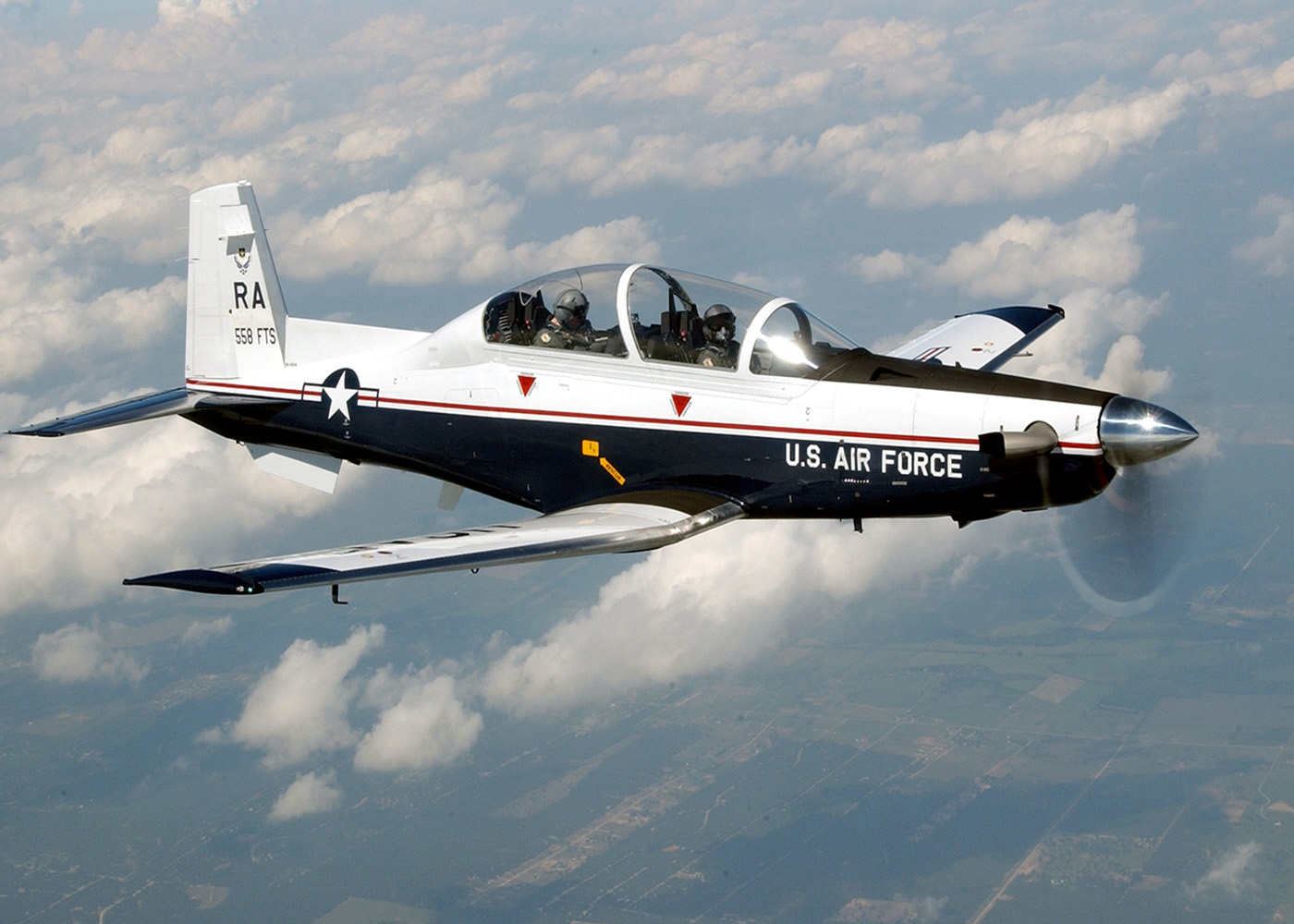On July 31st, 2009, the USAF finally retired the last of its Cessna T-37 Tweet trainer aircraft. The aircraft first flew almost fifty-five years ago.
The final seven T-37’s, formerly in service with the 80th Flying Training Wing at Sheppard AFB, Wichita Falls, Texas, serving the Euro-NATO Joint Jet Pilot Training (ENJJPT) program, are headed for different destinations. Four will go into storage at AMARC in Arizona, while three will head for the Utah Test and Training Range, where I presume they’ll end up as targets.
in April 2008. (Photograph courtesy of USAF. Click to enlarge.)
The Tweet has given sterling service over many decades, not only in its originally-designed role as a trainer, but in the further-developed A-37 Dragonfly attack aircraft, derived from the trainer, with more powerful engines, a strengthened wing, and other adaptations. It gave useful service in the Vietnam War, and is still in front-line service with some Air Forces to this day.
The story of how the Tweet got its unusual name is amusing. According to Wikipedia:
The T-37A had one noticeable drawback: it was very noisy, even by the standards of a jet aircraft. The intake of air into its small turbojets emitted a high-pitched shriek that led some to describe the trainer as a “Screaming Mimi”, and it was referred to as the “6,000 pound dog whistle” or “Converter” (converts fuel and air into noise and smoke). The piercing whistle quickly gave the T-37 its name: “Tweety Bird”, or just “Tweet”. The Air Force spent a lot of time and money sound-proofing buildings at bases where the T-37 was stationed, and ear protection remains mandatory for all personnel when near an operating aircraft.
The T-37 will be replaced by the Hawker Beechcraft T-6 Texan II.
The T-6 is a turboprop aircraft, rather than a ‘pure jet’, but advances in technology mean that it’s much more capable than the T-37’s it will replace. As USAF Brigadier-General Jeffrey B. Kendall points out, “Some might think it unusual or a step backwards to replace a jet aircraft with a prop-driven one, but let me say that this is not your granddaddy’s T-6. This primary flight trainer outperforms the over 50-year-old flying ‘birdwhistle’ in just about every area except perhaps in noise generation.”
In all, 1,269 T-37 trainers were built, along with a further 577 A-37B Dragonfly variants. (Some 40 T-37’s were converted to the earlier A-37A configuration.) They’ve served (and some continue to serve) with the Air Forces of 14 nations. That’s a record of which Cessna can be justly proud.
Peter


The main source of the noise from this aircraft is the centrifugal-flow compressors on the engines. An outdated design, now nearly completely replaced by axial-flow turbojets. The only potential advantage of centrifugal flow is that the engine package is shorter, than axial-flow; but the associated drawback is the larger diameter. They were state-of-the-art in the early 50s, but are now mainly used for APUs and some small gas=turbine engines.
They're also used as jet-fuel starters for the F-16, and sound just about the same.
Thanks for bringing back memories of my days at SAFB. I've still got a shoulder patch from an ENJJPT newbie who thanked me for giving him a tour of our Viper MX trainer. I think I was more thrilled than he.
I always wanted to fly a Tweet. They looked like fun.
When I was little, I went on a school field trip that included a visit to Columbus AFB. While the T-38s there were sexy, the T-37 struck me as looking very fun to fly. Maybe one day I'll stumble over an opportunity to catch a ride in one of the few privately-held Tweets.